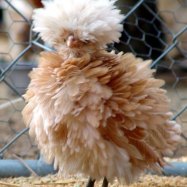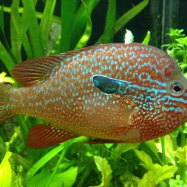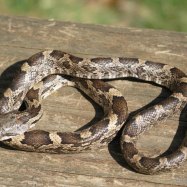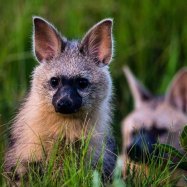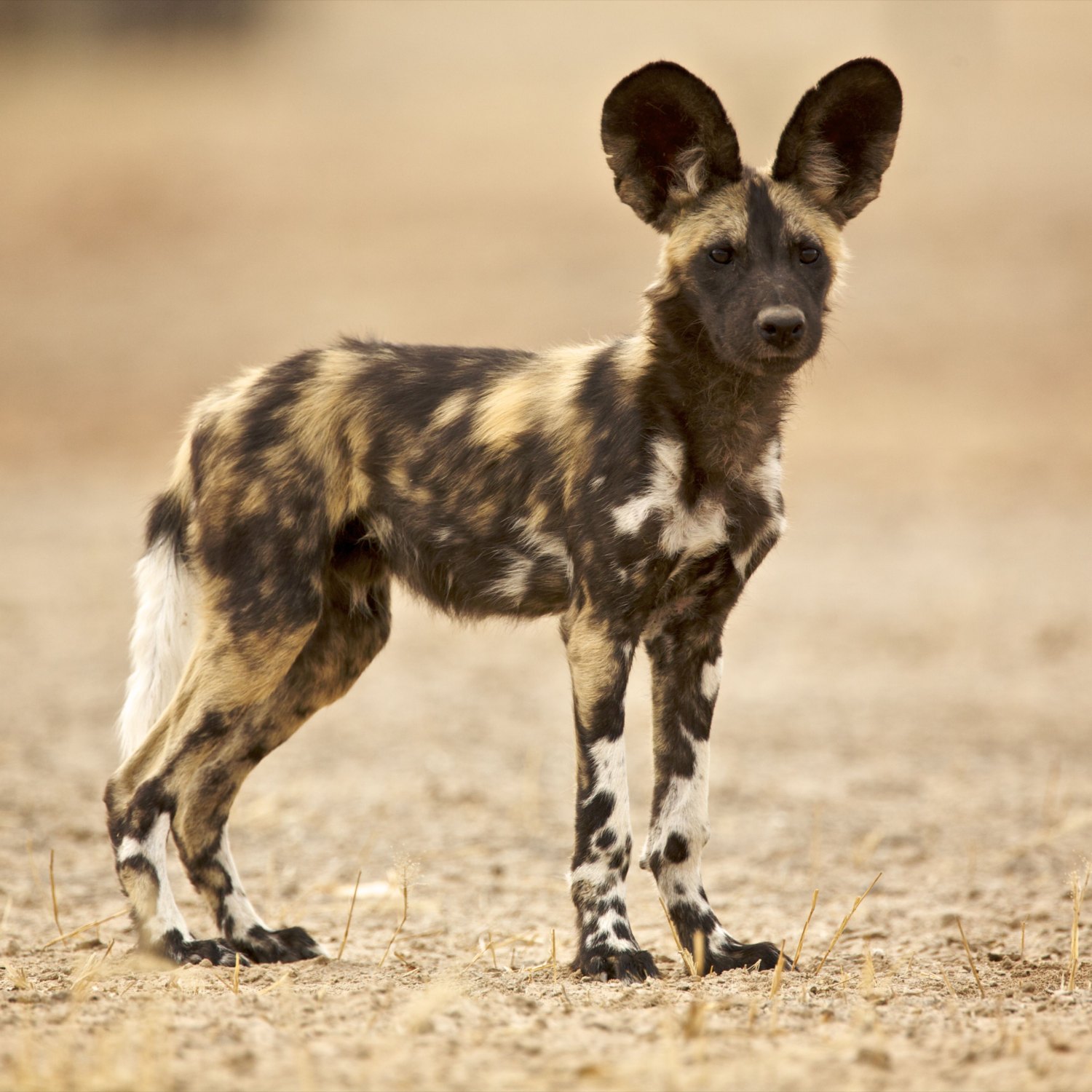
African Wild Dog
100-130 cm (39-51 inches)
The African Wild Dog, also known as the African Painted Dog, is a fascinating and endangered species. With a slender and elongated body, long legs, and a unique painted coat, these animals are found in the African continent. Unfortunately, their population is declining due to habitat loss and human-wildlife conflict. Help protect these magnificent creatures by learning more about them and spreading awareness. #AfricanWildDog #EndangeredSpecies #Conservation
Animal Details Summary:
Common Name: African Wild Dog
Kingdom: Animalia
Habitat: Savannahs, grasslands, and woodland areas
Fierce and Fascinating: The African Wild Dog
The African wild dog, scientifically known as Lycaon pictus, is an enigmatic and captivating animal that roams the vast plains of Sub-Saharan Africa. With its multi-colored fur, slender body, long legs, and impressive hunting skills, the African wild dog is a top predator that plays a crucial role in maintaining the balance of its ecosystem.But despite its impressive features and vital role, these wild dogs are facing an alarming decline in their population. Currently listed as an endangered species, the African wild dog is in need of our attention and protection African Wild Dog. In this article, we will take a closer look at this fascinating creature, its behavior, habitat, threats, and conservation efforts.
A Wild Dog By Any Other Name
Before we delve into the specifics of this animal, let us first understand its name. The African wild dog is also known as the African painted dog or the Cape hunting dog. It belongs to the kingdom Animalia, the phylum Chordata, and the class Mammalia. As a member of the order Carnivora, the African wild dog is in the same family as wolves, foxes, and domestic dogs, the Canidae family.Ancestry and Range
The African wild dog can trace its ancestry back to prehistoric times, with fossils dating back to more than 12,000 years ago. They are believed to have diverged from the ancestral wolf-dog lineage about 3 million years ago, making them one of the most unique and ancient carnivores in Africa.These wild dogs can be found in various countries in Africa, including Botswana, Kenya, Zimbabwe, Namibia, and South Africa. They are primarily found on the African continent, with small populations in southern Morocco and northern Algeria Adelie Penguin.
Habitat and Range
African wild dogs are adapted to live in a variety of habitats, but they are most commonly found in savannahs, grasslands, and woodland areas. These areas provide them with open spaces to hunt and a water source to stay hydrated. They also use dens to rest and hide their young.However, their geographical range is now limited to Sub-Saharan Africa due to habitat loss and human encroachment. As human populations expand, wildlife habitats shrink, leaving wild dogs with less space to roam and hunt. This has contributed to the decline in their population and pushed them onto the endangered species list.
Appearance and Physical Characteristics
The African wild dog is perhaps most well-known for its unique and striking coat pattern. Their fur is marked with patches of black, white, yellow, and brown, making every individual dog's coat unique. Their coat also acts as camouflage, making it easier for them to blend into their surroundings while hunting.Other physical characteristics of the African wild dog include its slender and elongated body, resembling a domestic dog. However, they have longer legs, which give them incredible speed and agility. They have large round ears and a dark muzzle, adding to their distinct appearance. Their size can vary, with the males being slightly larger than females.
Feeding Behavior
As carnivores, the African wild dog's main source of food is meat. They are skilled hunters, preying on a variety of animals such as antelopes, gazelles, and even large prey like wildebeests. Unlike other predators, they do not have particular territories and hunt in packs.Their hunting strategy is highly coordinated and efficient, with each member of the pack having a specific role. While some chase the prey, others flank it, and the rest secure the kill. This teamwork ensures that they have a higher success rate when hunting as a pack.
Threats and Conservation
The African wild dog population faces many challenges, with the most significant threat being habitat loss due to human activities. Other contributing factors include diseases, human-wildlife conflict, and the effects of climate change.But despite these challenges, efforts are being made to protect and conserve these wild dogs. Organizations such as the African Wildlife Foundation (AWF) and the African Wild Dog Conservancy (AWDC) are working to increase public awareness, conduct research, and implement conservation strategies to safeguard these animals and their habitats.
One such strategy is the reintroduction of wild dogs to areas where they have disappeared. This helps to increase their population and genetic diversity. Another approach involves working with local communities to mitigate conflicts between humans and wild dogs by implementing sustainable solutions like building predator-proof enclosures for livestock.
The Economic Value of the African Wild Dog Population
Apart from being vital in maintaining the balance of its ecosystem, the African wild dog provides essential economic benefits to the communities living in its ecosystem. These include tourism opportunities, employment, and income generation. As such, conserving these wild dogs would also benefit the local communities and their livelihoods.Conclusion
The African wild dog may not be as well-known as other African animals such as lions or elephants, but its significance cannot be underestimated. They are unique, intelligent, and play a vital role in their ecosystem. However, their existence is under threat, and without urgent conservation efforts, they may soon disappear from the African continent.By learning more about the African wild dog and supporting conservation efforts, we can help ensure the survival of this remarkable animal for generations to come. Let us all work together to protect the African wild dog and preserve its place in the wild.

African Wild Dog
Animal Details African Wild Dog - Scientific Name: Lycaon pictus
- Category: Animals A
- Scientific Name: Lycaon pictus
- Common Name: African Wild Dog
- Kingdom: Animalia
- Phylum: Chordata
- Class: Mammalia
- Order: Carnivora
- Family: Canidae
- Habitat: Savannahs, grasslands, and woodland areas
- Feeding Method: Carnivorous
- Geographical Distribution: Sub-Saharan Africa
- Country of Origin: Various countries in Africa
- Location: African continent
- Animal Coloration: Multi-colored fur with patches of yellow, black, brown, and white
- Body Shape: Slender and elongated body with long legs
- Length: 100-130 cm (39-51 inches)
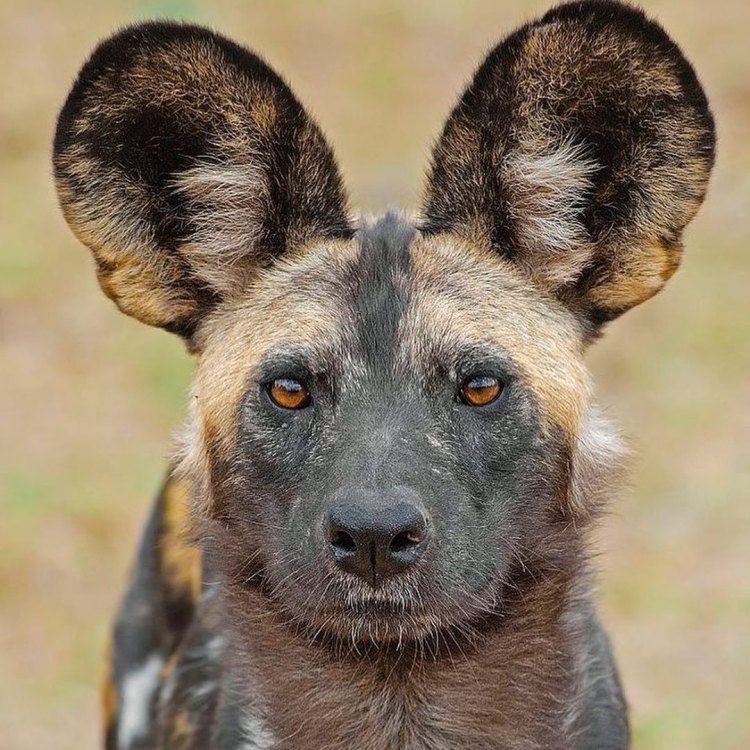
African Wild Dog
- Adult Size: 60-80 cm (24-31 inches) at the shoulder
- Average Lifespan: 6-10 years in the wild
- Reproduction: Sexual
- Reproductive Behavior: Monogamous social structure
- Sound or Call: High-pitched vocalizations that sound like a chorus of yelps
- Migration Pattern: Nomadic with no defined migration pattern
- Social Groups: Pack
- Behavior: Highly social and cooperative hunters
- Threats: Habitat loss, human-wildlife conflict, disease, and hunting
- Conservation Status: Endangered
- Impact on Ecosystem: Important predators that help maintain balance in the ecosystem
- Human Use: Tourism and research
- Distinctive Features: Large rounded ears and a bushy tail with a white tip
- Interesting Facts: African wild dogs are one of the most efficient hunters in the animal kingdom, with a success rate of 80%
- Predator: Lions, hyenas, and humans
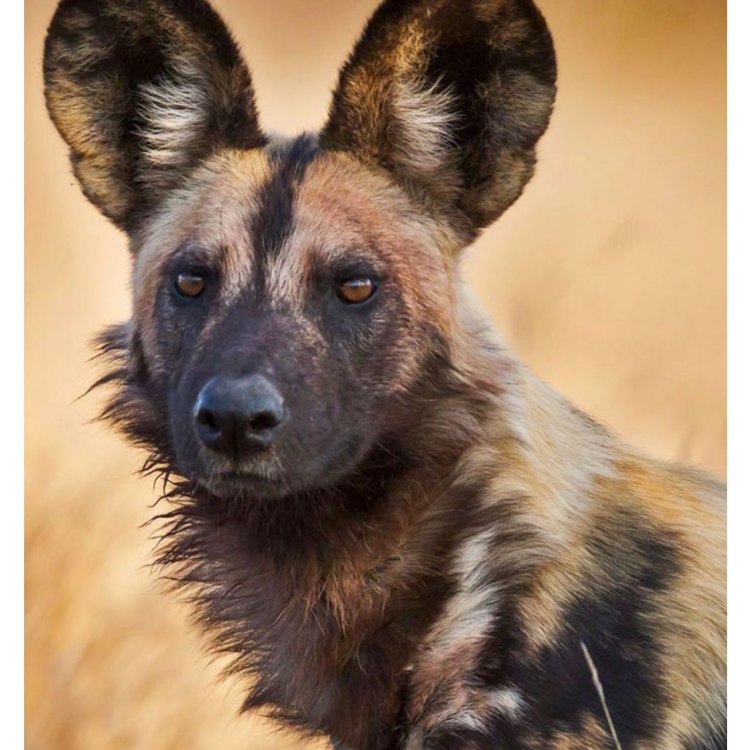
Lycaon pictus
The Fascinating World of the African Wild Dog
The African wild dog, also known as the painted dog or the African hunting dog, is a unique and endangered species that is native to sub-Saharan Africa. With their striking coat of intricate patterns and their highly social behavior, these canids are a captivating species that have captured the hearts of many wildlife enthusiasts.However, despite their undeniable charm, these animals face numerous threats and challenges that place them on the brink of extinction. In this article, we will delve into the fascinating world of the African wild dog, exploring its characteristics, behavior, threats, and impact on the ecosystem PeaceOfAnimals.Com.
African Wild Dog Characteristics
The African wild dog is a medium-sized canid, with a distinctive coat that sets it apart from other wild dog species. Its coat is a mosaic of black, brown, and white markings, giving it a unique and striking appearance. Each dog's coat is unique, making it easy to identify individuals within a pack.On average, adult African wild dogs stand at around 60-80 cm (24-31 inches) at the shoulder, with females being slightly smaller than males. They have long, slender legs, giving them a sleek and athletic appearance. Unlike other canid species, African wild dogs have four toes instead of five, making their feet look more like a cat's paws. This adaptation allows them to be nimble and agile, making them efficient hunters.
One of the most distinctive features of the African wild dog is its large, rounded ears and a bushy tail with a white tip. These unique ears are used for communication within the pack, while the tail helps them to maintain their balance during hunts Airedoodle.
Reproduction and Social Behavior
African wild dogs reproduce through sexual means, with a gestation period of around 70 days. The females usually give birth to litters of 6-16 pups, making it one of the largest litters in the animal kingdom. The pups are born in a den, where they stay for the first few weeks of their lives, being cared for and protected by the alpha female and other pack members.What sets African wild dogs apart from other canids is their monogamous social structure. Unlike other canids, where only the alpha male and female reproduce, African wild dogs have a shared reproductive responsibility within the pack. This unique social structure is essential for their survival, as it helps maintain a balanced pack structure and increase the chances of raising a successful litter.
The pack also plays a vital role in caring for the pups, with other members helping to feed and protect the young ones. This cooperative behavior and strong social bonds within the pack are crucial to the species' success in the wild.
Behavior and Hunting Habits
African wild dogs are highly social and cooperative hunters, with their survival depending on the success of the pack. These intelligent animals have a complex social hierarchy within the pack, with an alpha male and female leading the group.These efficient hunters have a success rate of around 80%, making them one of the most successful predators in the animal kingdom. This high success rate is attributed to their unique hunting methods. Unlike other predators, who rely on stealth and strength, African wild dogs use their speed and stamina to tire out their prey. They have long legs and a lean body, allowing them to reach speeds of up to 60 km/h (37 mph) and cover long distances.
When hunting, African wild dogs use a technique known as 'exhaustion hunting'. They will chase their prey over long distances, maintaining a steady pace that exhausts the prey, making it easier to catch. They are also highly cooperative hunters, with different members taking on various roles within the pack. While some chase and exhaust the prey, others will remain at strategic points, waiting for an opportunity to strike.
Threats and Conservation Status
Despite being efficient hunters, African wild dogs face numerous threats that have placed them on the endangered species list. One of the most significant threats to their survival is habitat loss. As human populations continue to grow and expand, African wild dogs' natural habitat is increasingly destroyed, leaving them with fewer areas to roam and hunt.Furthermore, human-wildlife conflict is another significant threat to the species. African wild dogs will occasionally prey on domestic livestock, leading to retaliation killings by farmers. This conflict further reduces the species' numbers and threatens their survival.
Disease and hunting also pose significant threats to African wild dogs. As they roam and hunt, they come into contact with diseases such as rabies and distemper, which can decimate entire packs. Additionally, their beautiful coats have made them a target for trophy hunters, leading to a decline in their population.
According to the International Union for Conservation of Nature (IUCN), African wild dogs are currently listed as endangered, with only around 6,000 individuals left in the wild. Conservation efforts, such as habitat protection and community education, are crucial in ensuring their survival.
Impact on the Ecosystem
African wild dogs play a crucial role in maintaining the balance of the ecosystem. As apex predators, they help control the population of herbivores, preventing overgrazing and promoting biodiversity. They also act as indicators of the ecosystem's health, with any decline in their numbers serving as a warning sign of underlying issues.Moreover, their cooperative hunting techniques also have a positive impact on the ecosystem. As they target the weak and sick prey, they help prevent the spread of disease within herds. Their presence also helps to reduce competition for resources among herbivores, leading to a healthier and more balanced habitat.
Human Use
The captivating nature of African wild dogs has made them a popular attraction for wildlife tourism in Africa. People come from all over the world to see these breathtaking animals in their natural habitat. Ecotourism, where tourists are educated about the species and its conservation, also plays a significant role in generating income that can be used for conservation efforts.African wild dogs are also essential in scientific research, with studies being conducted on topics such as pack dynamics, hunting behavior, and social structure. Understanding these animals is crucial in implementing effective conservation strategies and ensuring their survival.
Predators
While African wild dogs may be one of the most efficient hunters in the animal kingdom, they still face threats from other predators. Lions and hyenas are their main predators, often competing with them for food and territorial space. As human populations continue to grow and encroach on their habitat, humans have also become a significant predator for African wild dogs, contributing to their decline.Interesting Facts
- African wild dogs are one of the most efficient hunters in the animal kingdom, with a success rate of 80%.- They can run for long distances without getting exhausted, making them one of the most successful endurance runners in the animal kingdom.
- They are highly communicative animals, using high-pitched vocalizations that sound like a chorus of yelps to coordinate during hunts.
- Rather than having a defined migration pattern, they are nomadic and can travel long distances in search of food and suitable habitat.
- African wild dogs have a unique way of greeting each other, performing a high-energy greeting ceremony when they reunite after being separated.
In conclusion, the African wild dog is a unique and endangered species that plays a crucial role in maintaining the balance of the ecosystem. With their distinctive features, highly social behavior, and efficient hunting methods, these canids have captivated the hearts of many. It is essential to raise awareness of their conservation needs and take action to protect their natural habitat and ensure their survival for generations to come.
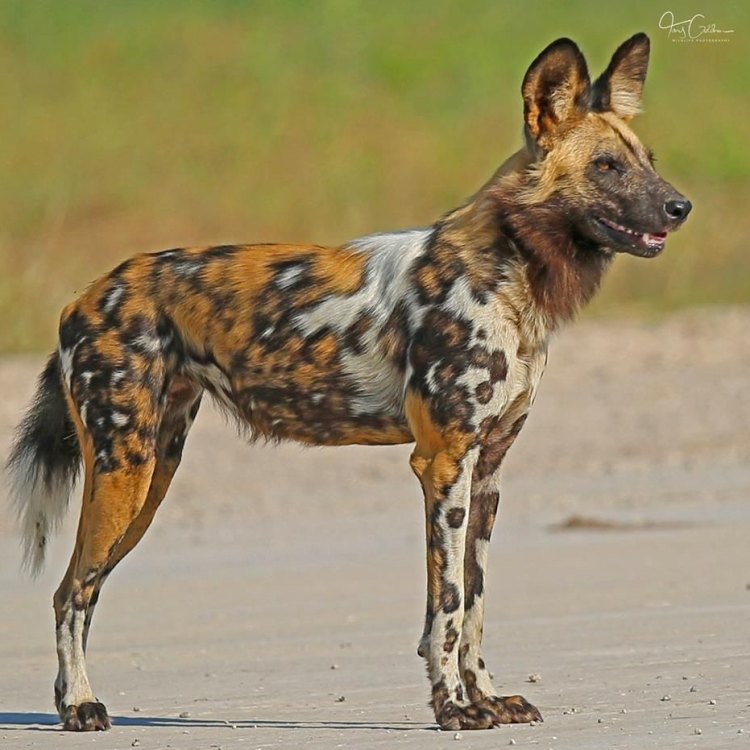
Fierce and Fascinating: The African Wild Dog
Disclaimer: The content provided is for informational purposes only. We cannot guarantee the accuracy of the information on this page 100%. All information provided here may change without prior notice.








